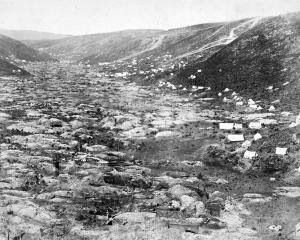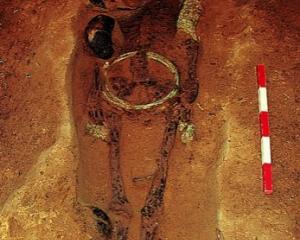On a summer’s day 3395 years ago, a young woman in Denmark died and was interred under a tumulus, in a coffin hewed from a massive oak, wrapped in a blanket and an ox hide. It was the tree rings that have provided this precise date. Miraculously the closed oak coffin has preserved her blonde hair, finger nails, and clothing. She wore a woollen blouse and a short string skirt with a belt holding a large, decorated bronze disc. A box made of birch bark lay beside her, containing a bronze awl, pins and her hair net. A bucket of beer was brewed from a mix of wheat, honey and cow berries.
She is not the only such burial. At about the same time, another young woman was buried under a tumulus nearby at Skydstrup. She too wore a woollen blouse with fine embroidery and a skirt, and her high status is reflected in her golden earrings. It was her blonde hair that amazed the excavators of this grave in 1935. It was 60cm long, and styled in a sophisticated manner over her head, held in place by a woollen cord fully 5m in length, and then by a horse hair net.
I have long had an interest in Danish prehistory. One of my classmates at University is now Queen Margrethe and I spent many months researching in Denmark for my PhD. So it was a pleasure to meet Karin Frei at the first Shanghai Archaeological Forum, where she was awarded a prize for her research on the Skydstrup woman’s hair.
Archaeological research is absolutely booming at present with a host of new analytical techniques teasing out information that was once thought beyond recovery. One of these extracts and analyses Strontium isotopes because these reflect the diet, and through what was eaten, the environment where individuals lived. Hair grows about 1cm a month, and so a 60cm-long sample records the habitat of a person in the last five years of their life. This woman died when aged about 18, so what did she do from her 13th birthday? The answer, surprisingly, is that she travelled. Raised far to the south, probably in the area of the Black Forest in southern Germany, she travelled to Denmark, probably given her high status, to marry a Jutland chief. She then returned home at least once, before again moving north to her new home. Even the wool of the Egtved woman has been analysed, and shown to come from afar. Tracing individual life histories in this way is showing how Bronze Age women were mobile, and elite marriages the order of the day.














